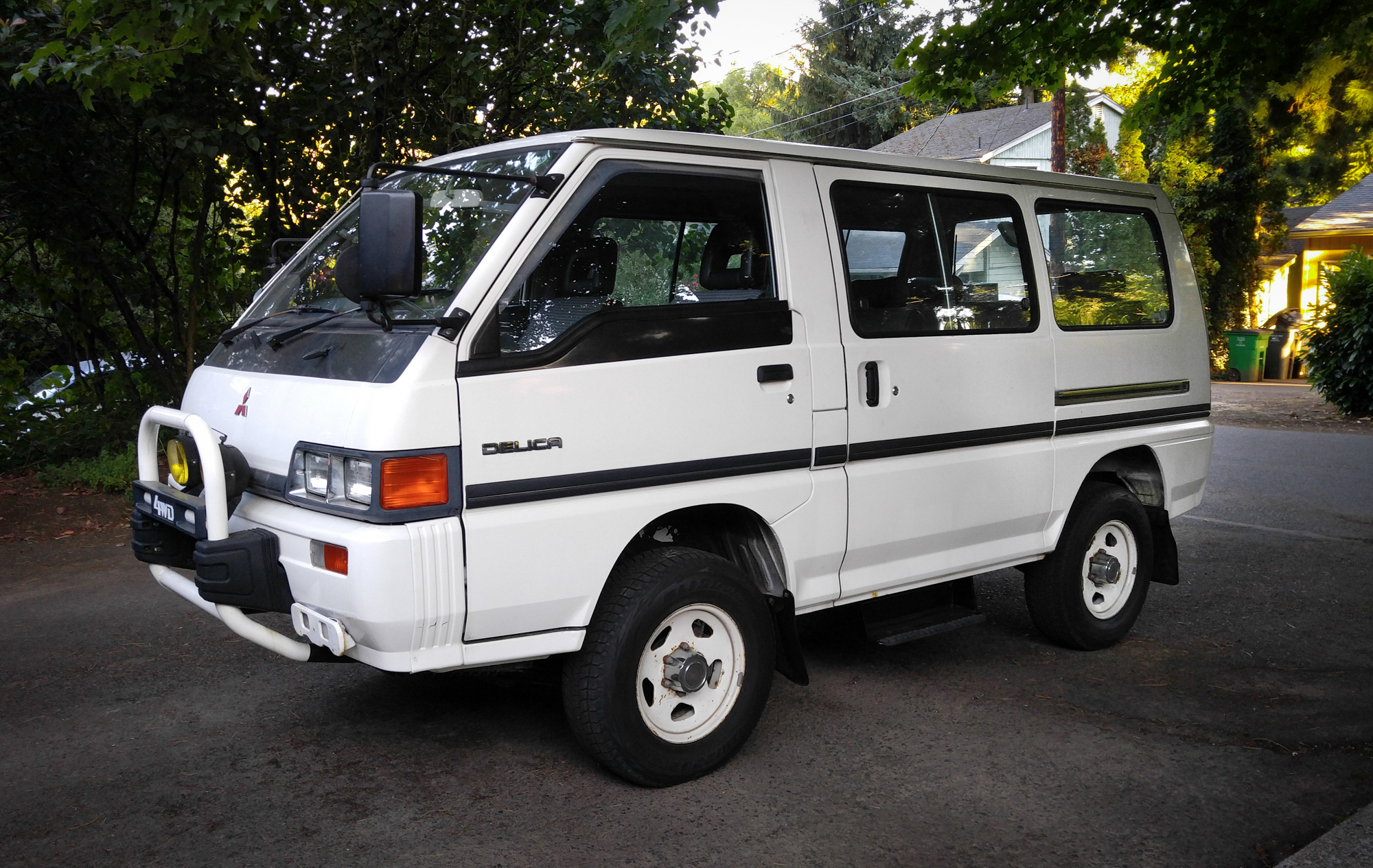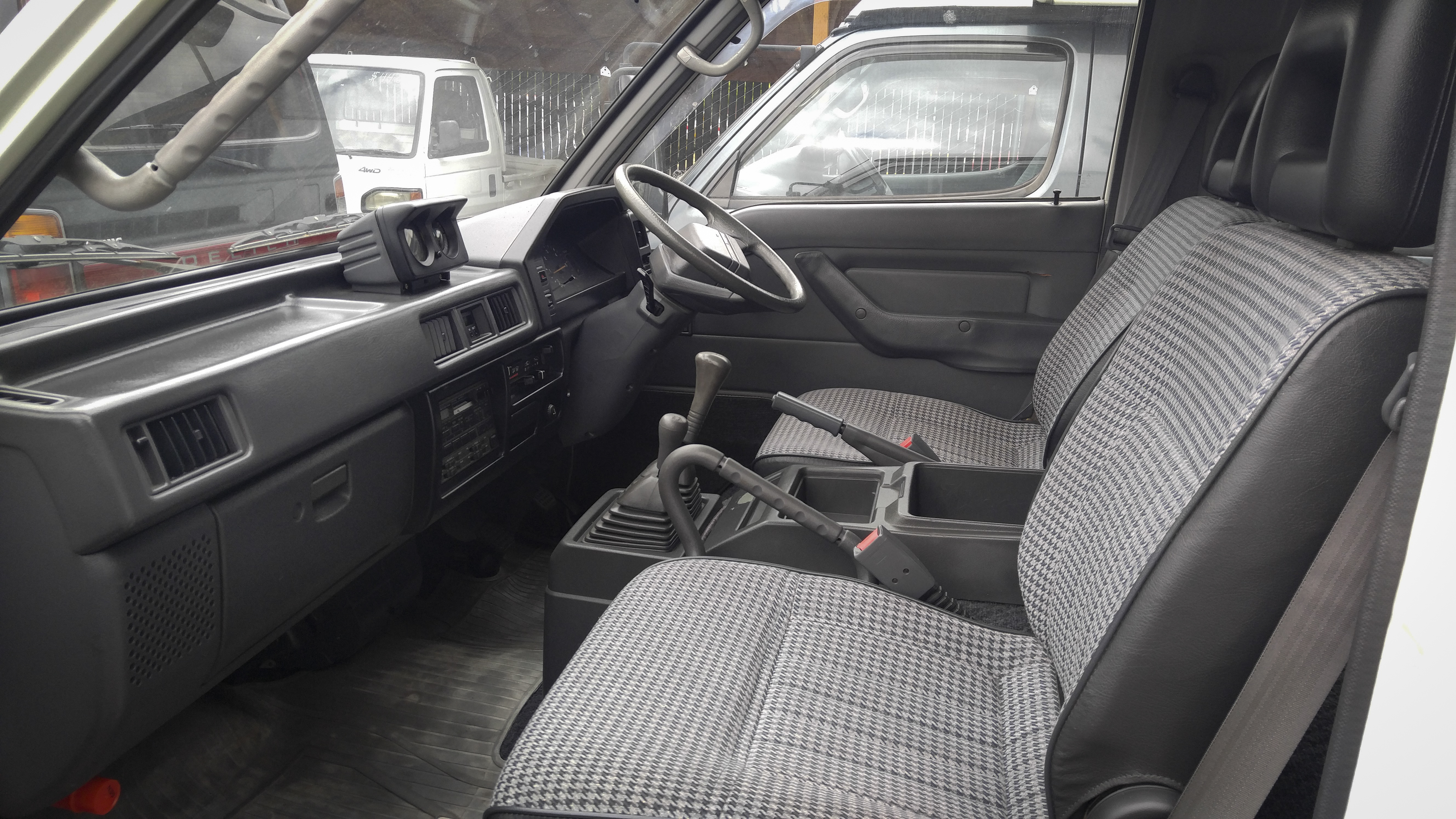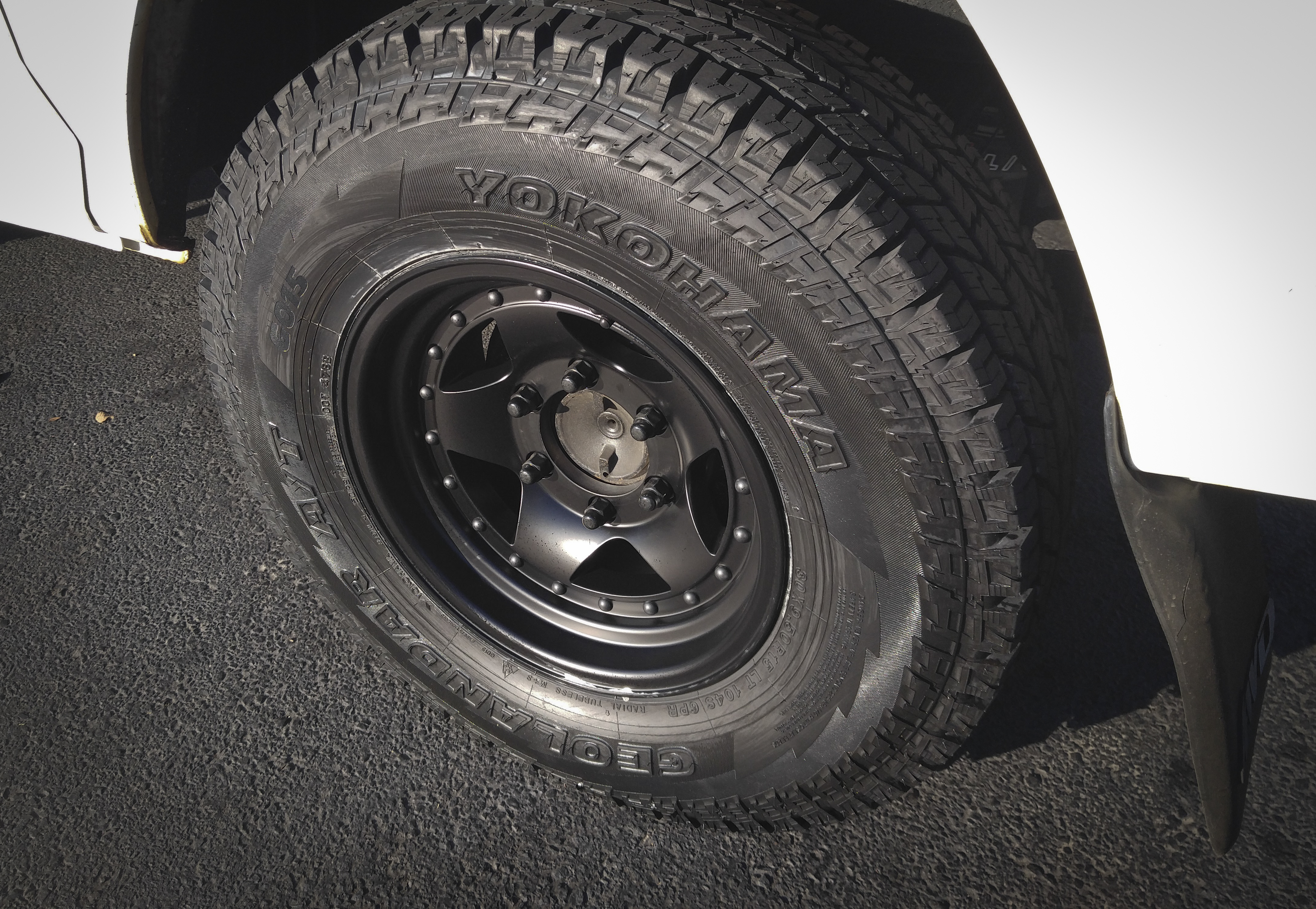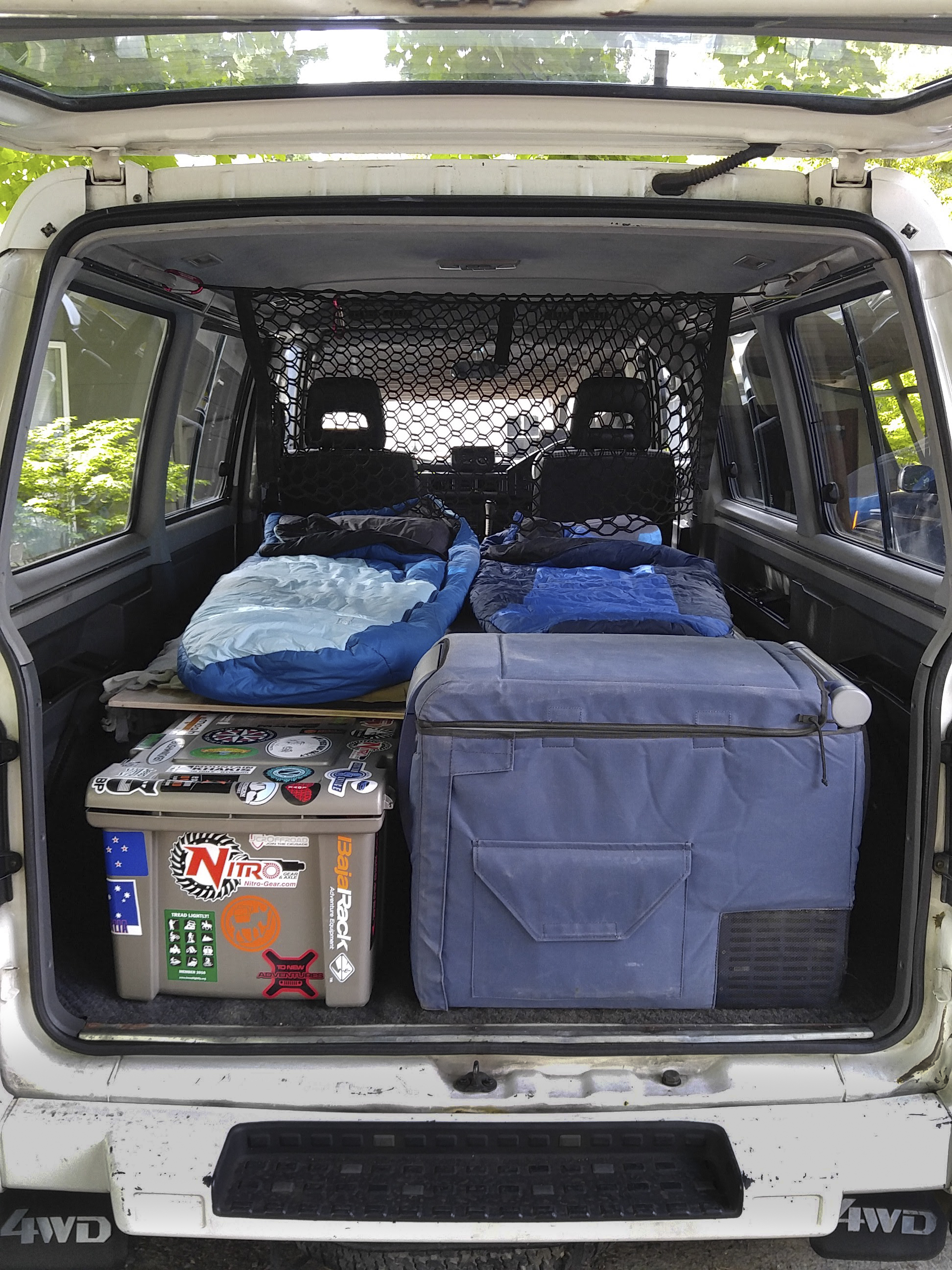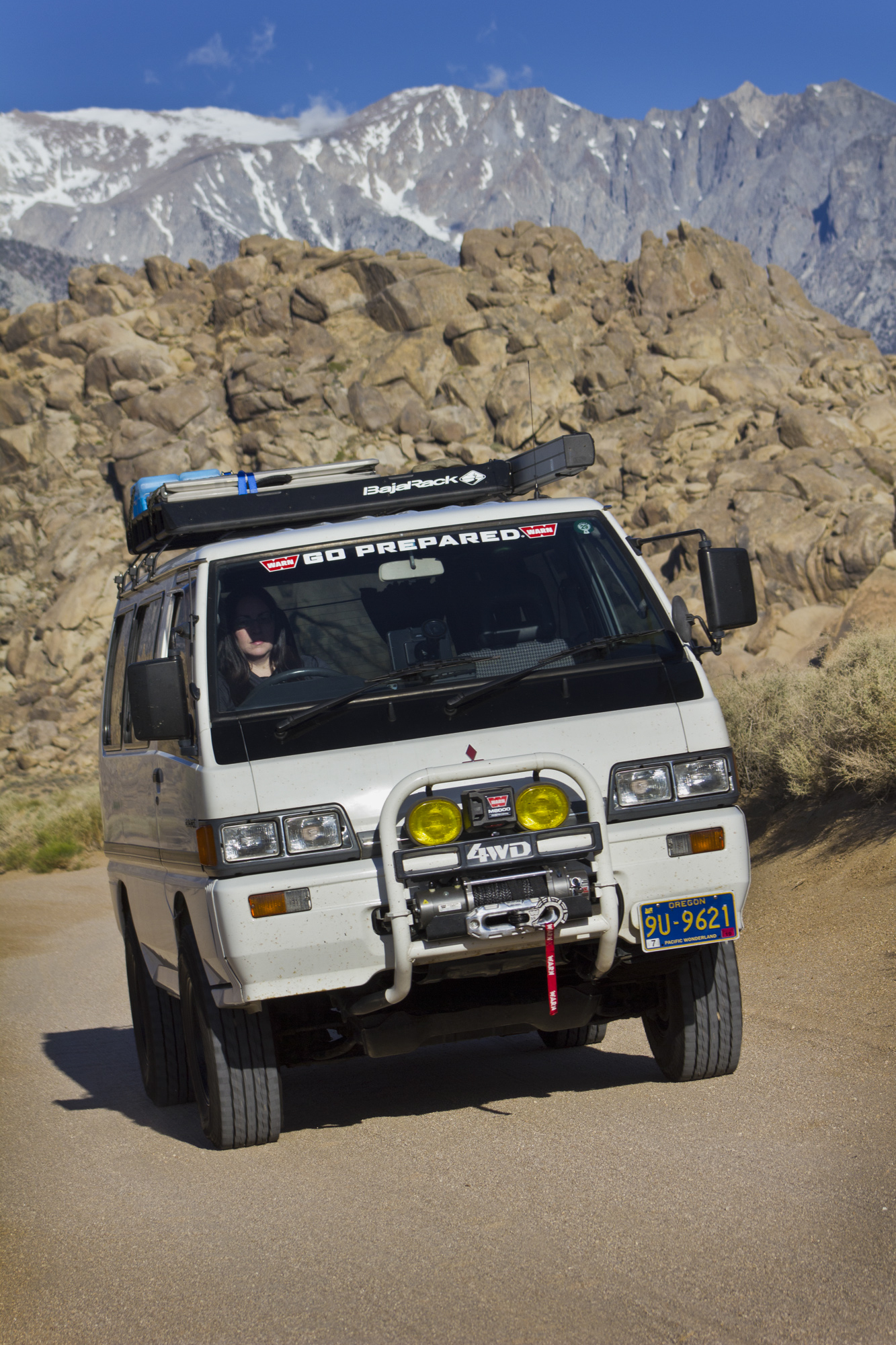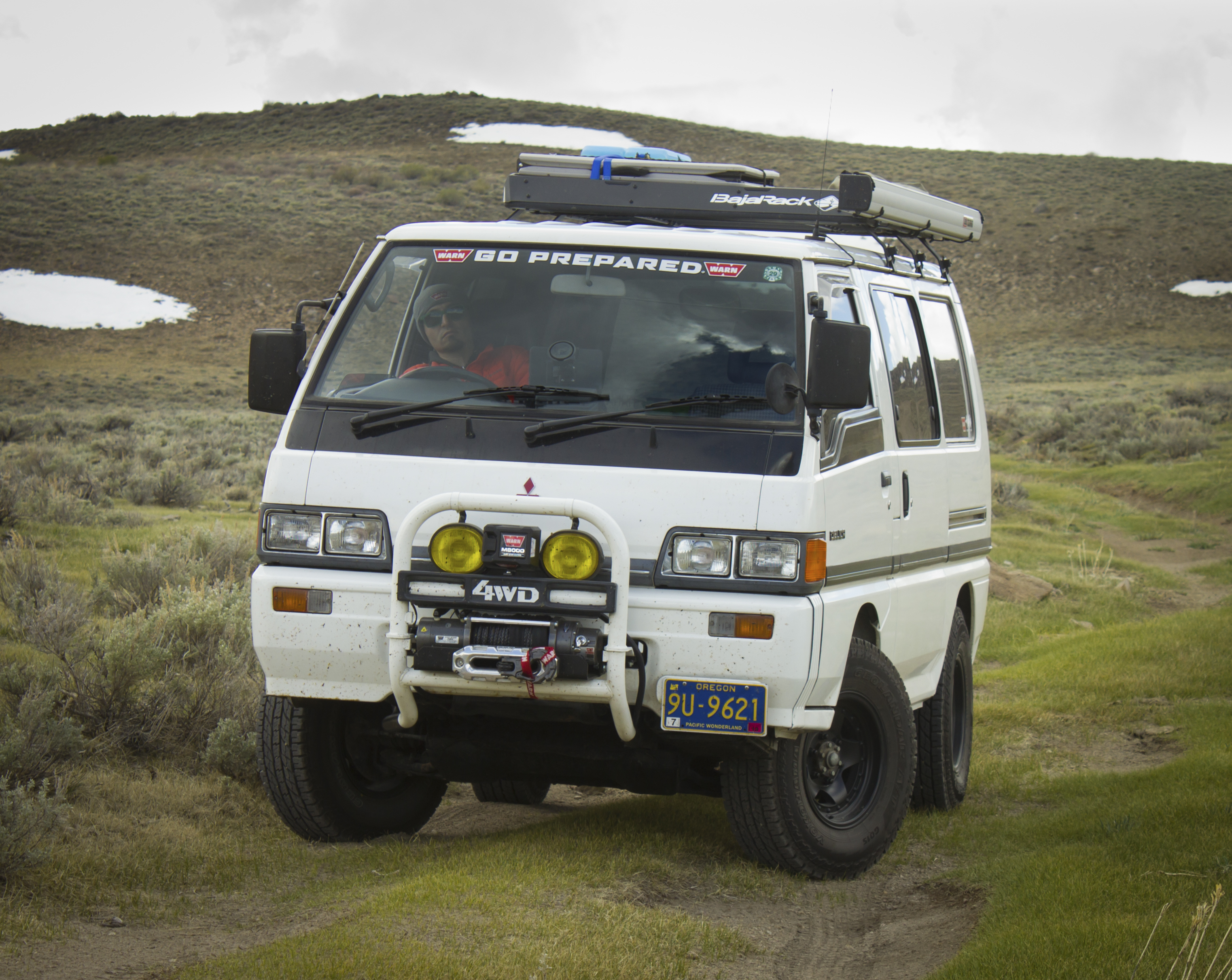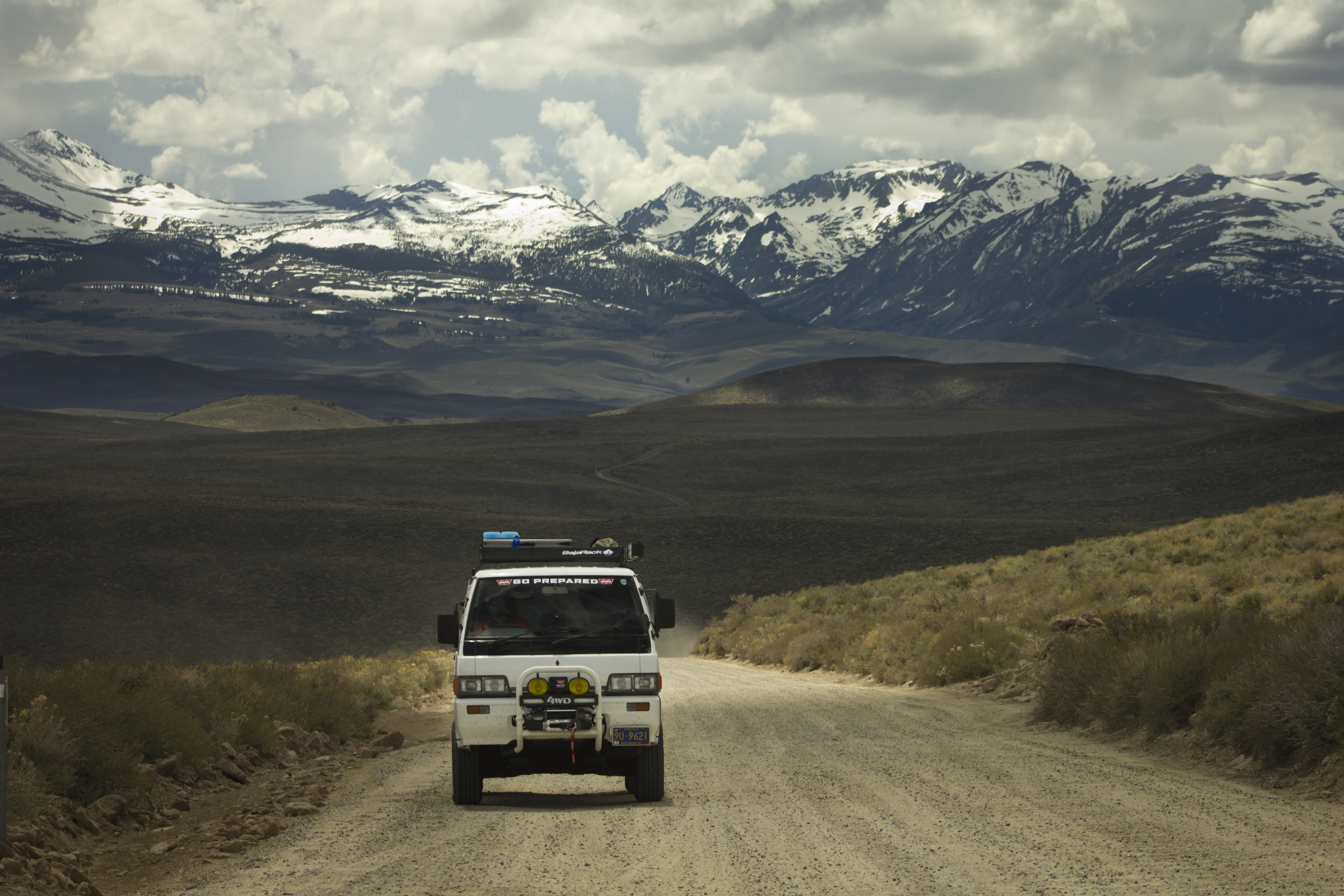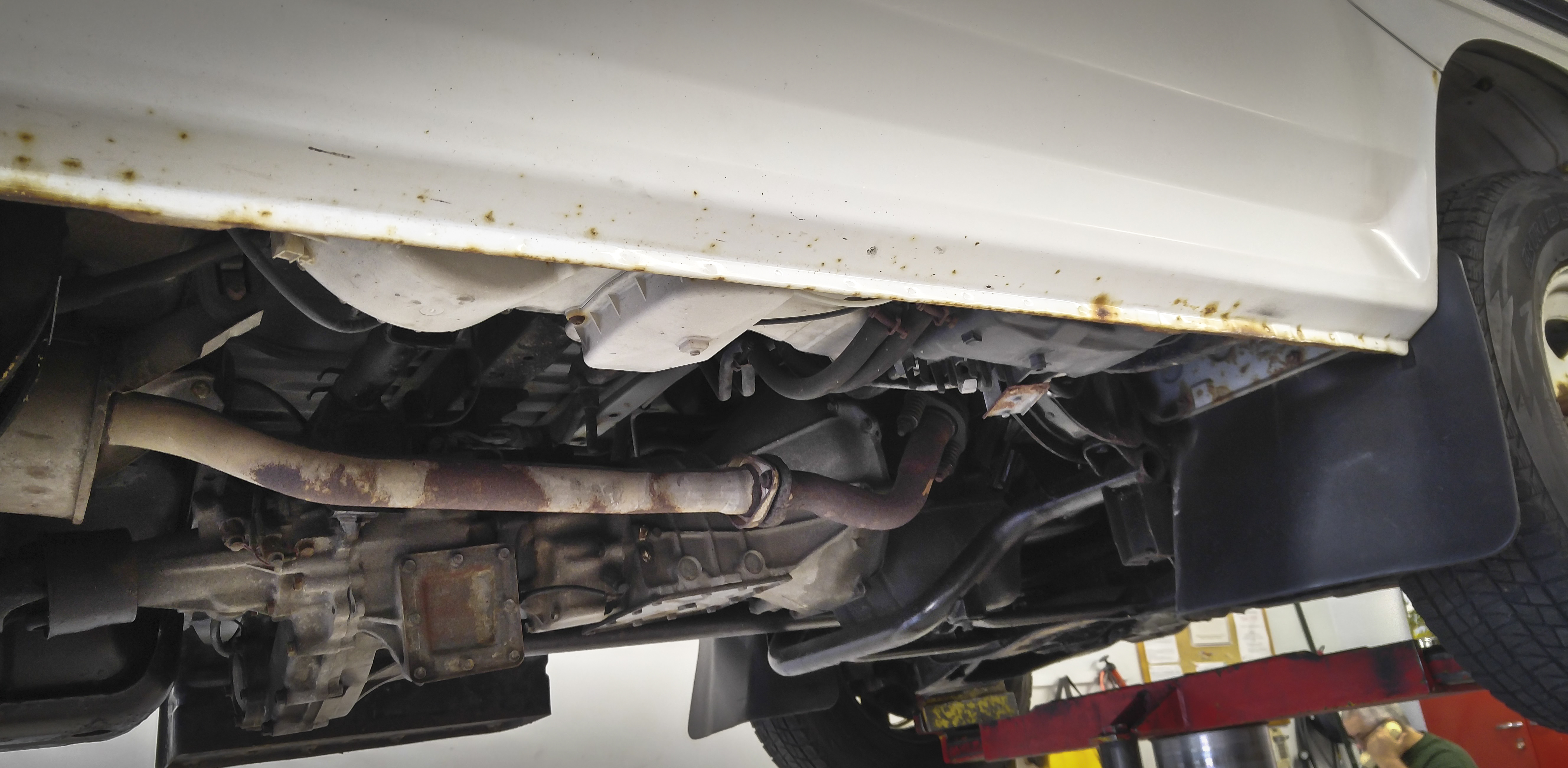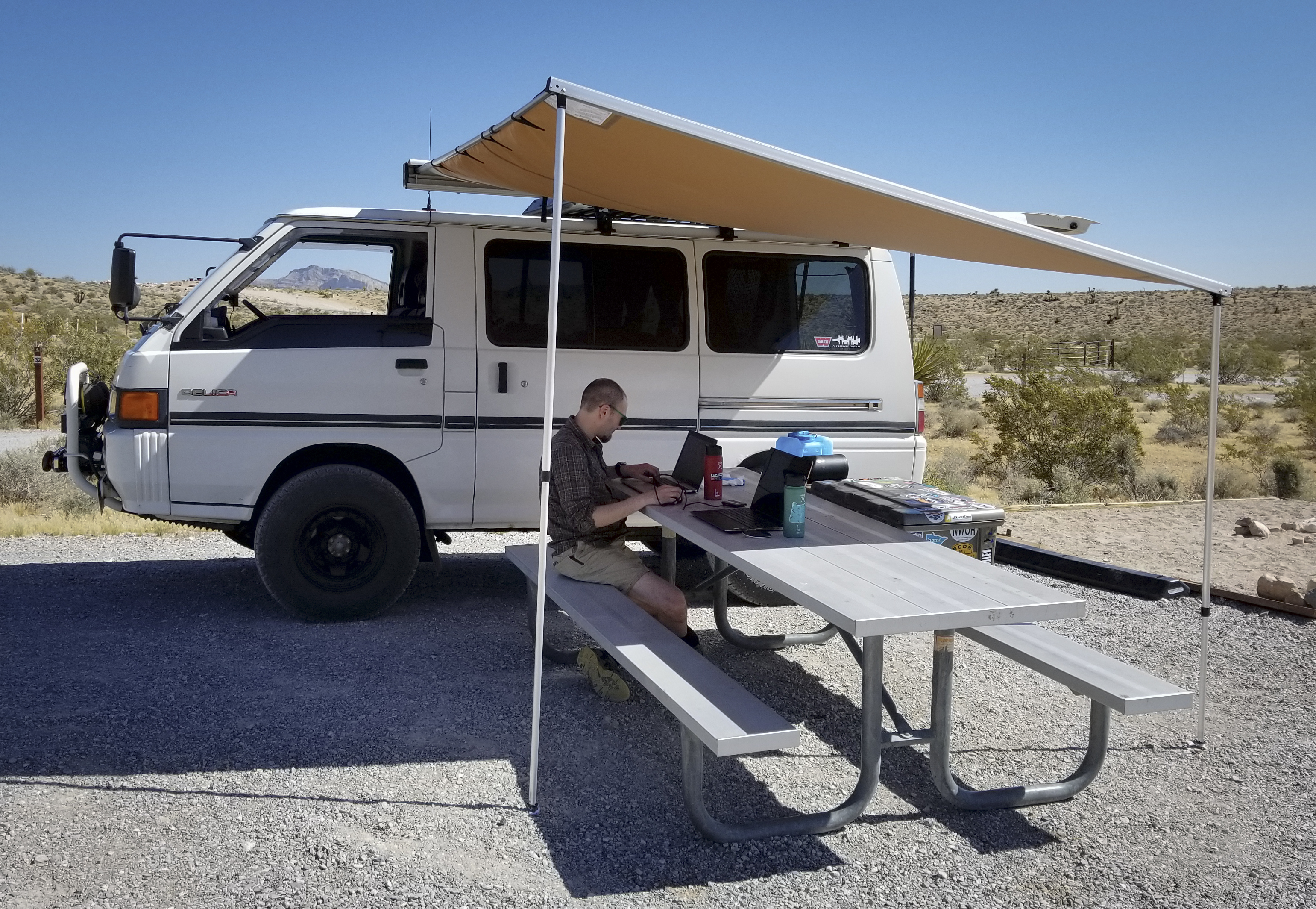Photography by Andy and Mercedes Lilienthal
It’s late afternoon on Waiheke Island, a 30-minute ferry ride from Auckland, New Zealand. We’re aboard a tour bus that takes people around the small idyllic isle, which is complete with lush scenery, wineries, historic locales, and a small central village. Our tour guide and bus driver is Horst Meyer, the husband of my wife’s Godmother, Helga. My wife and I are the last people on his bus for the day and headed back to the lot to leave the vehicle until tomorrow’s tours.
Horst tidies the bus up a bit, we disembark, and start walking through the parking lot. We’re headed towards a 1990s Mitsubishi Delica van. I don’t remember my exact words, but it was something like “Oh my God … is that your Delica?” At this point, I’m certain he thinks I’m a total loony. The van was scratched up, a few dents here and there. He unlocks it, and whisks open the sliding door revealing a plywood sleeping platform and a middle row of seats with seatbelts that may or may not have worked, but it didn’t matter. Frankly, I was having the kind of reaction most people have upon being able to ride in a Lamborghini.
I grew up with Mitsubishi vehicles. (My first car was also a Mitsubishi Expo LRV.) While in college in the mid-1990s—and having the internet for the first time—I discovered all sorts of JDM vehicles including the Mitsubishi Delica Star Wagon, first introduced in 1986. These vans were so quintessentially Japanese. Forward control, tall, narrow body, and available 4WD. They were tougher looking than Toyota’s and Nissan’s van offerings, and they were from the brand I grew up with. So rad. So unobtainable.
On the second day staying with Horst and Helga, we needed to get groceries. Helga asks, “Would you like to drive the Delica to the market?” I was a bit hesitant. I hadn’t driven a right-hand drive car in New Zealand, but I had to do it. I fell in love with the van almost immediately: The turbo diesel sound, the notchy gearbox, the forward-control configuration, and low-range 4WD (which we needed to get out of the steep driveway). That Delica—a low-roof 1993 with the Exceed trim package—would take us all around New Zealand’s North Island. It was slow, capable, and wonderful. I knew someday I would own one.
Less than a year after returning from New Zealand, we found a just-right Delica on craigslist, a low-roof 1989 in GLX trim. It wasn’t my intent to buy one so soon after coming back, but it was the right rig at the right time.
CHARACTER BUILDER
Delica Vans, especially the L300 Star Wagon series (which is the kind we own) ooze with character. Equipped with a two-speed transfer case, diesel power plant, and manual transmission, Delicas from our generation have a unibody chassis with a solid rear axle and an independent torsion bar front suspension. The engine is located underneath you, and to access it, you must lift the passenger’s seat.
Our particular model, which we call the Space Tractor, showcases a gray-and-white hound’s tooth upholstery with a glint of metallic thread, gray vinyl trim, and sliding side windows. From the factory, it’ll seat seven if you include the fold-down jump seat. It has its own rear climate control system and functional air conditioning. It’s roomy, comfortable, and versatile.
Any Delica Star Wagon isn’t going to rapid transportation; quite the contrary. On the stock tires (215SR15), it will comfortably cruise at 60 mph, but once we hit 62 (100 kmh), a speed warning chime begins to politely ding like someone gently tapping you on the shoulder to say, “oh excuse me, but you may want to slow down.” Our first modification to our van was a set of 30×9.50R15 Yokohama Geolandar G015 all-terrain tires, which allowed us to fool the speed chime and go 65 mph without it, well, chiming in. And, with the van’s short gearing, these tires now let us easily maintain 65 mph. Will it go faster? Yes. Do you want to? Not so much. I did have the van up to 80 mph once and it was mildly terrifying.
A VERSATILE VAN
Our goal with this van was to maintain its versatility. That meant keeping the interior, one row of bench seating, and opting for a quick-and-dirty camping setup when desired. When we got it, the van had two bucket seats up front, and two rows of bench seats. The middle will “Jack and Jill,” meaning you can pull a lever and the seatback will flip to the other side of the seat bottom, allowing you to sit facing the back of the van. There are actually seatbelts on both sides of the bench because—safety! OK, pretty much any forward-control van isn’t exactly the safest rig, but as I say: Still safer than a motorcycle … maybe.
After a couple of beers worth of consideration, we opted to remove the rearmost bench seat permanently. This allows us a place to store our camp box and ARB fridge/freezer when traveling. To create a sleeping platform, we bought a piece of birch plywood, cut it down the middle and hinged it, and lay it out on the middle seat. The area underneath the plywood acts as a place to store gear. The fact that the plywood is hinged allows us quick access to our stuff. When we’re not traveling, we pull the fridge, the camp box, et voila! Passenger van!
We can also take out the center bench for instant Space Tractor delivery van. We’ve carried everything from camping gear, to wheels and tires, to winch bumpers in the van.
MORE MODS
We wanted to outfit our van for increased capability when traveling. First up was a roof rack: a Bajarack unit for an 80 Series Toyota Land Cruiser fits perfectly onto our Delica. To that we added Bajarack’s awning mount for our ARB Aluminum 2500 awning, the company’s fuel can holder (and two 20 L diesel cans—the van’s small tank means less than 300 miles on a tank, so extra fuel is a good idea), and their spare tire holder for a full-size spare. Finally, we have Bajarack’s MAXTRAX mount, where we keep two red MAXTRAX.
I work for Warn Industries and wanted to have a winch on the van. I ended up using the WARN universal winch mount and had a friend fab up brackets so we could mount a winch. I wanted to keep the factory bull bar and large factory yellow fogs. The plate was narrowed and brackets were fabricated to tie into the unibody for a sturdy winch mount. To that, I added a WARN M8-S winch with Epic Hook, and polished Epic Hawse Fairlead. I’ve used the winch to both teach winching classes as well as recover stuck rigs; the heaviest was a very stuck Toyota Hiace on a snow run in February 2019.
DEFINITELY NOT PERFECT
Sure, there is a lot to like about the Delica, but it’s not all sunshine and unicorns.
Parts, such as filters, brake pads, that kind of thing, are easily sourced. You can get all that stuff at your local parts store, so long as you know the part number. Thanks to Facebook, forum sites, and online parts retailers with comprehensive exploded-view diagrams, parts are pretty simple. However, Delica-specific things take more time, patience, and money to obtain. For example, we had to replace the rubber gaskets on the side windows. These parts had to come from Japan. Note: Before you place your order from Asia or Europe, you’ll want to make doubly sure you’re getting the right items because there usually isn’t any returning them to the overseas warehouses.
The good news is, thanks to the Internet, nearly everything can be obtained; from timing belts and water pumps, to clutch kits and interior parts. And, amazingly, many of these parts will arrive faster than you can send a postcard from one side of the U.S. to the other.
I really do love the diesel engine—the sound, the low-end power, and the overall feeling. Ours can be a bit smoky at startup, especially on cooler mornings.
Two other not-so-great things: speed and safety. You cannot be in a hurry in a Delica. They’re bulky, lumbering things on the pavement. And while surprisingly nimble at slow speeds, they’re a bit like a brontosaurus: Kinda pokey, kinda tippy, and kinda unrefined. Plus, these are old rigs without modern safety bits. No airbags, no anti-lock brakes, no skid control.
Finally, rust. Delicas can be rot boxes if they’ve spent most of their time in the salt. Even prime examples can have rusty bits here and there, so if you look into buying one, be sure to get underneath it.
For us, the positives far outweigh the negatives. They’re compact, surprisingly decent off pavement, and are a ton of fun. They’re quirky, reliable, and easy to live with. I’d suggest knowing how to turn a wrench if you’re going to own one, but even so, they’re simple vehicles. No computers, easy electrics, and a simple engine.
No, they’re not for everyone, but they are for us. And regardless of the shortcomings, I am just as much in love with the Delica as I ever was.




